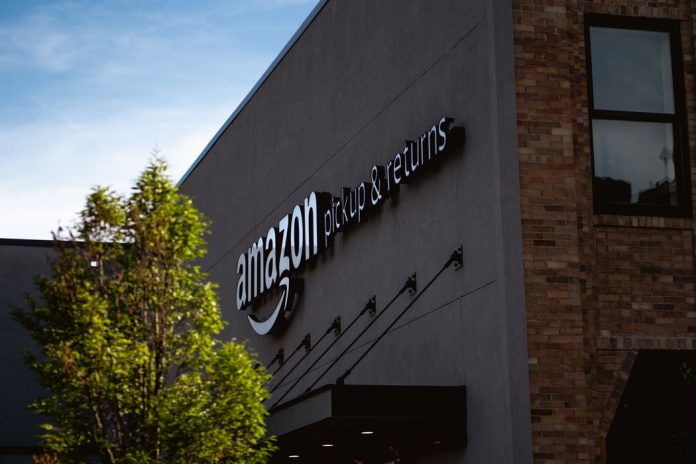The Grocery Boom: Why Amazon’s Rise is Good for Manufacturing
PoliticMag Press Release : October 06, 2020
The coronavirus pandemic has made the ability to order groceries online — and in-store — feel more indispensable, with the world of groceries one of the few industries to have seen record sales thanks to incredible demand. The need to buy food and drink will never subside, but the global pandemic has only heightened our love and desire for everything from bread and beer to cleaning products and toilet paper, with more and more of us using online methods to order household essentials.
One company who, even before the global pandemic struck, saw groceries as their next market to conquer is Amazon. The multinational technology giant has been looking for a slice of the action since 2007, but now their focus is even greater, as plans for worldwide expansion into online grocery deliveries — and a chain of physical stores in the US — start to take shape. Their competitors are watching closely, but today’s focus is all how growth plans will impact manufacturing.
Amazon’s growth still to reach its prime
Between 2014 and 2019, Amazon’s food and grocery sales grew by almost 50 percent. In major cities across the US, Prime members can take advantage of Amazon Fresh, a service by where groceries can be ordered online and delivered the same or next day delivery. There’s also Amazon Go, where customers shop in stores instead of online, but technology is still at the heart of the customer journey, with no cashier checkouts and sensor fusion detecting when products are taken from shelves. To pay for the goods, customers simply exit the store and their account is charged accordingly.
The former’s success has led Jeff Bezos to branch out across the pond, with Amazon Fresh launching in London and plans for a UK-wide expansion in the pipeline by the end of the year. The latter’s success in its current 20 locations in has led the world’s richest man to expand his horizons further with more plans for physical grocery stores, where you can pick up everything from baked goods to household products.
Healthy competition
Amazon’s accelerated plans to gain a bigger share of the market, both online and in-store, has certainly sparked a reaction. Instacart — who lost one of its biggest partners in the form of Whole Foods to Amazon — is teaming up with Walmart, the biggest food and beverage producer in the US, to compete with the power of Amazon.
Thanks to a surge in sales during the pandemic, the partnership between the two is possible, with a same-day delivery service being offered in Los Angeles, San Francisco, San Diego, and Tulsa.
Any talk of rapid expansion plans is good news for the manufacturing industry. But with fast growth comes the caveat of keeping workspaces hazard-free, hygienic, and safe to use, especially when new factories are being built. The use of stainless steel electrical enclosures can provide the hygiene and safety required to get production lines going without disruption.
Not only will it help third-party supplies of manufacturing parts, but it will also potentially create jobs in a climate where there are record levels of unemployment. Amazon is already one of the biggest employers in the US, and further expansion plans could be a big boost.
The IHS Markit’s manufacturing sector Purchasing Managers’ Index jumped from July’s reading of 50.9 to 53.6 for August showing a small indication that the grocery boom could be playing its part, but it’s important to note that manufacturing labor productivity decreased at a 15.5% annual rate in the second quarter of 2020, as output fell 47% and hours worked dropped 37.3%. These were the largest quarterly declines ever recorded. Hopefully, things will pick up now that lockdown restrictions have eased.
Progression is a good thing
Much like the criticism Amazon has faced for opening checkout-free stores, it can often be difficult to accept change, especially if it hinders one person but benefits the other. From a manufacturing point of view, Amazon’s gung-ho approach to digital and physical supermarkets is one to be relished.
More warehouses are likely to be needed, especially with rival competitors announcing plans to use the increased profits from lockdown to compete with the Bezos empire. Manufacturing labor and parts will likely see a rise in demand, and in the process, create a better outlook for a sector that has suffered from a decreased output and stalled productivity.
Sources
https://www.statista.com/statistics/1039307/private-label-food-sales-amazon-category-us/
https://edition.cnn.com/2020/08/11/tech/walmart-instacart-partner-whole-foods/index.html
https://www.electrixinternational.com/us/stainless-steel-electrical-enclosures/
https://www.sharecast.com/news/international-economic/us-manufacturing-and-services-sector-pmis-jump-in-july–7616177.html#:~:text=IHS%20Markit’s%20manufacturing%20sector%20Purchasing,increasing%20from%2050.0%20to%2054.8.







